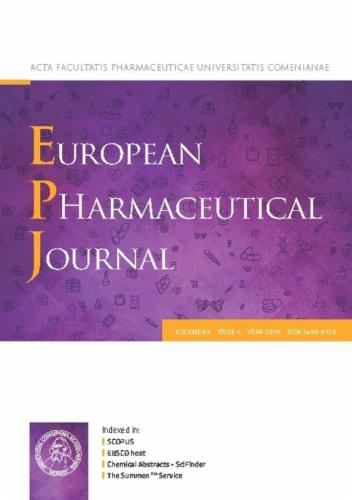GFA III类药物的共磨:比较低和高玻璃化转变温度的影响。
IF 4.3
3区 医学
Q1 PHARMACOLOGY & PHARMACY
引用次数: 0
摘要
随着制药行业对可持续技术的日益关注,碾磨提供了一种无溶剂的方法来改善药物的溶解。用赋形剂研磨药物为实现过饱和动力学提供了额外的机会。因此,这项工作旨在提出共磨非诺贝特和阿普米司特的见解,这两种良好的玻璃形成物分别具有低和高玻璃转变温度(Tgs)。药物与交联棉糖钠共磨不同工艺时间,然后进行热分析,结晶度,表面积和溶出度的研究。低tg玻璃原非诺贝特的溶解增强与工艺诱导的共磨体系表面积的增加高度相关(R2 = 0.96)。相比之下,高tg玻璃原体在共磨≥10 min后逐渐失去晶体秩序,并且在生物相关溶出测试中观察到良好的过饱和动力学。有趣的是,共磨阿普米司特的熔点降低,并与体外溶出过程中最高测量药物浓度(cmax)呈线性相关(起始温度R2 = 0.98;峰值温度R2 = 0.96)。阿普雷米司特的熔点下降在90天后保持稳定,而非诺贝特共磨20分钟或更长时间后,在储存时熔点增加。该研究表明,与交联棉糖钠共磨是理想的适合于高Tg的良好玻璃形成物。因此,熔点下降被提议作为一个容易获得的关键质量属性,以估计药物在干共磨配方中的可能溶出性能。本文章由计算机程序翻译,如有差异,请以英文原文为准。

Co-milling of glass forming ability class III drugs: Comparing the impact of low and high glass transition temperatures
With an increasing focus on sustainable technologies in the pharmaceutical industry, milling provides a solvent-free approach to improve drug dissolution. Milling of drugs with an excipient offers additional opportunities to achieve supersaturation kinetics. Therefore, this work aims to present insights of co-milling fenofibrate and apremilast, two good glass formers with low and high glass transition temperatures (Tgs) respectively. Drugs were co-milled with croscarmellose sodium for various process durations followed by thermal analysis, investigation of crystallinity, surface area and dissolution. The dissolution enhancement of the low-Tg glass former fenofibrate highly correlated with the process-induced increase in surface area of co-milled systems (R2 = 0.96). In contrast, the high-Tg glass former apremilast lost its crystalline order gradually after ≥ 10 min of co-milling, and favourable supersaturation kinetics during biorelevant dissolution testing were observed. Interestingly, the melting point of co-milled apremilast decreased and linearly correlated with the highest measured drug concentration (cmax) during in vitro dissolution (onset temperature R2 = 0.98; peak temperature R2 = 0.96). The melting point depression remained stable after 90 days for apremilast, whereas fenofibrate co-milled for 20 min or more showed an increase in melting point upon storage. This study demonstrated that co-milling with croscarmellose sodium is ideally suited to good glass formers with a high Tg. The melting point depression is thereby proposed as an easily accessible critical quality attribute to estimate likely dissolution performance of drugs in dry co-milled formulations.
求助全文
通过发布文献求助,成功后即可免费获取论文全文。
去求助
来源期刊
CiteScore
9.60
自引率
2.20%
发文量
248
审稿时长
50 days
期刊介绍:
The journal publishes research articles, review articles and scientific commentaries on all aspects of the pharmaceutical sciences with emphasis on conceptual novelty and scientific quality. The Editors welcome articles in this multidisciplinary field, with a focus on topics relevant for drug discovery and development.
More specifically, the Journal publishes reports on medicinal chemistry, pharmacology, drug absorption and metabolism, pharmacokinetics and pharmacodynamics, pharmaceutical and biomedical analysis, drug delivery (including gene delivery), drug targeting, pharmaceutical technology, pharmaceutical biotechnology and clinical drug evaluation. The journal will typically not give priority to manuscripts focusing primarily on organic synthesis, natural products, adaptation of analytical approaches, or discussions pertaining to drug policy making.
Scientific commentaries and review articles are generally by invitation only or by consent of the Editors. Proceedings of scientific meetings may be published as special issues or supplements to the Journal.

 求助内容:
求助内容: 应助结果提醒方式:
应助结果提醒方式:


